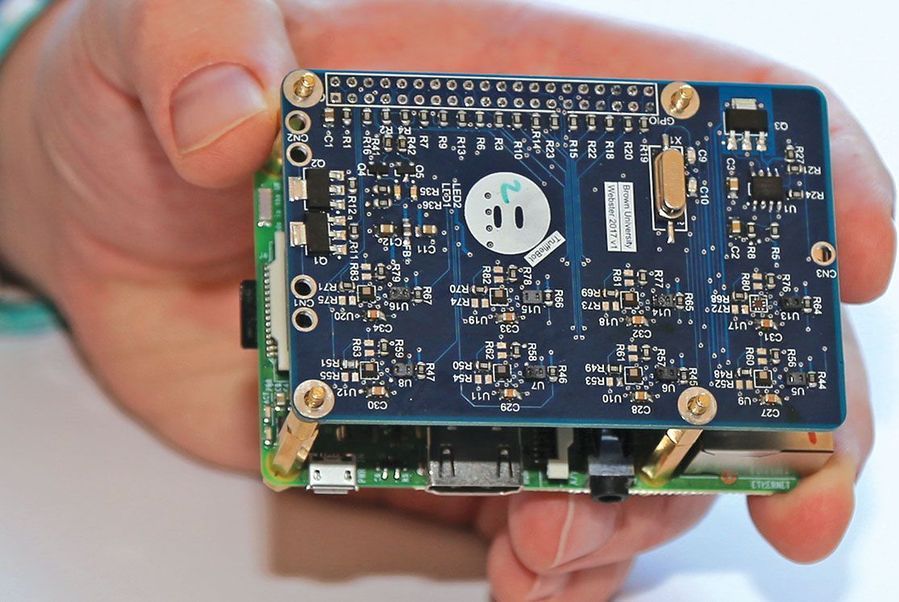Circa 2018
E-noses come in a variety of architectures, but most rely exclusively on chemical sensors, such as metal oxides or conducting polymers. The TruffleBot goes a step further: A 3.5-inch-by-2-inch circuit board that sits atop a Raspberry Pi contains eight pairs of sensors in four rows of two. Each sensor pair includes a chemical sensor to detect vapors and a mechanical sensor (a digital barometer) to measure air pressure and temperature.
Then comes the sniffing bit: Odor samples are pushed across these sensors by small air pumps that can be programmed to take up puffs of air in a pattern. “When animals want to smell something, they don’t just passively expose themselves to the chemical. They’re actively sniffing for it—sampling the air and moving around—so the signals that are being received are not static,” says Rosenstein.
In an analysis of nine odors, including those from cider vinegar, lime juice, beer, wine, and vodka (and using ambient air as a control), the team found that chemical sensors alone accurately identified an odor about 80 percent of the time. The addition of sniffing improved accuracy to 90 percent. Throw in the pressure and temperature readings and the e-nose recognized an odor 95 percent of the time.









Comments are closed.